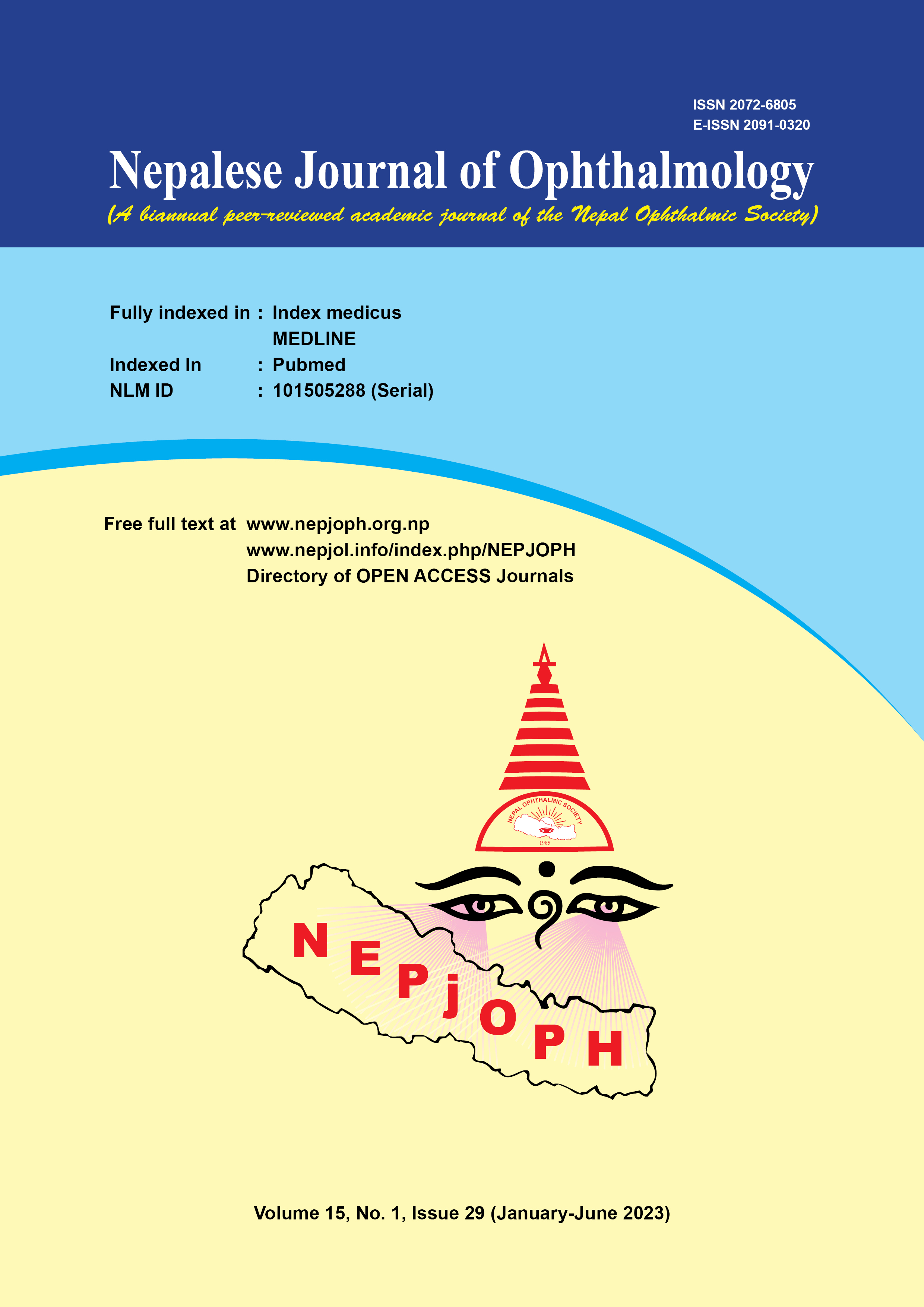A Case of Full Thickness Parafoveal Hole Associated with Chorio-Retinal Atrophy
DOI:
https://doi.org/10.3126/nepjoph.v15i1.51624Keywords:
Non-foveal macular hole, Optical coherence tomography angiography, Parafoveal hole, Parafoveal macular holeAbstract
Background: An idiopathic full-thickness parafoveal hole (PFH) in the absence of trauma or intraocular surgery is a rare finding.
Case: A 60-year-female who did not gain good vision following an uneventful phacoemulsification with intraocular lens (IOL) implantation in the right eye (RE) consulted a retina specialist, one year after her cataract surgery. There was no history of trauma, radiation exposure, reduced scotopic vision, or any other intraocular surgery. Her personal and family history were unremarkable for any systemic or ocular diseases. Routine blood investigations, an electrocardiogram, and a detailed ocular examination were done.
Observation: She had the best corrected visual acuity (BCVA) of LogMAR 1.0 (20/200; 6/60) in the right eye. The right eye had an axial length (AL) of 23.50 mm and an intraocular lens power of 21.0 dioptres. The ultrawide field fundus examination saw parafoveal chorio-retinal atrophy without significant peripheral myopic degeneration. On optical coherence tomography (OCT), a central foveal thickness of 138 microns with foveal scarring was noticed. There was a full-thickness parafoveal hole between the fovea and optic disc having a height of 198 microns; base diameter of 240 microns; arm lengths of 203 microns and 206 microns; and a minimum linear dimension of 42 microns. The optical coherence tomography angiography scan showed a reduced vessel density in the superficial and deep retina; and increased visibility of choroidal vessels in outer retina chorio-capillaries, chorio-capillaries, and choroid slab at the parafoveal hole The ultrasound B scan was anechoic and there was no posterior vitreous detachment (PVD).
Conclusion: The axial length, intraocular lens power and fundus examination did not indicate pathological myopia. As there was no preceding posterior vitreous detachment or retinal surgery, the underlying retinochoroidal atrophy most probably caused the full-thickness parafoveal hole.
Downloads
Downloads
Published
How to Cite
Issue
Section
License
Copyright (c) 2023 Nepalese Journal of Ophthalmology

This work is licensed under a Creative Commons Attribution-NonCommercial-NoDerivatives 4.0 International License.
This license enables reusers to copy and distribute the material in any medium or format in unadapted form only, for noncommercial purposes only, and only so long as attribution is given to the creator.




